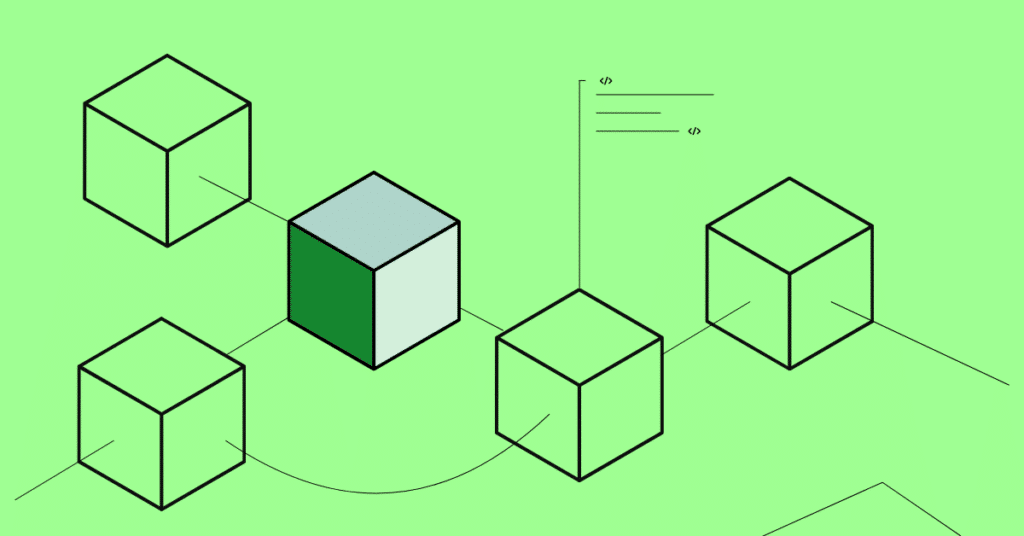Interacting with the blockchain network

1 Introduction
Interoperability with blockchain paves the way for developers who want to use blockchain technology. It helps you build decentralized applications, execute smart contracts, and integrate blockchain functionality. This article will provide you with all the prerequisites and steps needed to create a suitable environment, perform tasks and develop better solutions and applications for blockchain. So are you ready?
2. Prepare the environment
When setting up your environment, it is very important to choose the right tools according to your needs and requirements.
As the name implies, a node connection is a connection between nodes in the network. This node is the gateway to access blockchain data and services.
Most blockchain nodes provide Remote Procedure Call (RPC) and WebSocket endpoints. Where RPC is mostly used in synchronous requests and Websocket is used in real-time data and event expression.
3. Establish relationships
There are various libraries for establishing connections, most of which are based on the two most popular programming languages, Python and JavaScript.
The JavaScript libraries Web3.js and ethers.js are mostly used to interact with Ethereum nodes. Web3.py is equivalent to web3.js in Python which is also used for Ethereum Node interaction.
Also, some other libraries Go-Ethereum is based on Golang, and Ethereum is based on C#.
Additionally, for other programming languages, you can check the documentation for configuring the various languages and their libraries.
Using APIs and libraries to connect to external networks makes communication easier. Some popular APIs are Infura, which provides scalable infrastructure, Alchemy is used for Ethereum development. Infura provides a robust infrastructure to connect Infura to the Ethereum network. Infura makes connecting to Ethereum easy by providing reliable and scalable API services. Some other APIs are Quicknode, Moralis, and Cloudflare's Ethereum gateway.
There are different APIs but the setup process has the same general steps as follows.
Creating an account Generating an API key Use the generated key to configure your connection.
4. Asking the blockchain
A blockchain query is similar to querying a series of data for another time. You can request data access to retrieve and read.
Various types of information can be accessed from the blockchain, such as block lists, transaction data, and account balances. The libraries we discussed earlier have functions for doing reading tasks. For example, Web3.js has methods like web3.eth.getBlock() and web3.eth.getTransaction().
Blockchain networks create events for certain actions. Setting up listeners allows you to react to these events in real time. Use WebSocket connections or polling to track new events and data, and this is a form of data handling.
5. Writing to Blockchain
Putting information on the blockchain requires creating and signing transactions and working with smart contracts. This section shows you how to do these things using well-known libraries.
Building and signing transactions;
JavaScript (Web3.js)
const account = web3.eth.accounts.privateKeyToAccount(‘YOUR_PRIVATE_KEY'); web3.eth.accounts.wallet.add(account); web3.eth.defaultAccount = account.address;
const tx = { from: account.address, to: ‘RECIPIENT_ADDRESS', value: web3.utils.toWei(‘0.1', ‘ether'), gas: 21000, };
web3.eth.send transaction(tx).in(‘receipt', console.log).in(‘error', console.error);
Using Web3.py (Python code).
account = web3.eth.account.privateKeyToAccount(‘YOUR_PRIVATE_KEY');
tx = { ‘from' : account . address, ‘to': ‘RECIPIENT_ADDRESS', ‘value': web3.toWei(0.1, ‘ether'), ‘gas': 21000, ‘nonce': web3.eth.getTransactionCount(account.address));
Sign_tx = sign
Now after you write the transaction it is sent to the blockchain network to be verified and included in the block.
\web3.eth.sendSignedTransaction(signedTx.rawTransaction) .on(‘receipt', console.log) . on(‘error', console.error);
tx_hash = web3.eth.sendRawTransaction(signed_tx.rawTransaction) receipt = web3.eth.waitForTransaction receipt(tx_hash) print(receipt)
Modern contract interaction:
Handling smart contracts that are already running means you need to use certain functions to read and change the contract's stored data (state variables). This back-and-forth lets you see everything smart contracts can do to create complex features in your dApps (decentralized applications).
Interaction with modern contracts;
Reading from a smart contract: const contractABI = [/* ABI array */];const contractAddress = ‘YOUR_CONTRACT_ADDRESS'; const contract = new web3.eth.Contract(contractABI, contractAddress);
Calling function: contract.methods.getBalance(‘0xYourAccountAddress').call() .then (balance => { console.log(‘Balance:', balance); }) .catch(error => { console.error() ‘error:', error);});
Wariting:const account = web3.eth.accounts.privateKeyToAccount(‘YOUR_PRIVATE_KEY'); web3.eth.accounts.wallet.add(account); web3.eth.defaultAccount = account.address;
const data = contract.methods.transfer(‘0xRecipientAddress', web3.utils.toWei(‘1', ‘ether'))) encodeABI();
const tx = { from: account.address, to: contractaddress, gas: 2000000, data: data, };
web3.eth.send transaction(tx).on(‘receipt', receipt => { console.log(‘Transaction receipt:', receipt));
6. Handling of responses
Handling responses from blockchain interactions in the right way is key to creating reliable and easy-to-use applications. This means knowing how to manage transaction receipts and analyze events that generate logs and smart contracts.
Post each transaction, an invoice is generated containing information such as:
Transaction Hash: Unique identifier Code Status: Gives the status of the transaction as 0 or 1 Block number: The block in which the transaction is included Gas Used: The amount of gas used for the transaction Logs generated by the transaction to analyze the event
example:
Transactions and smart contracts create records and events that provide useful details about the actions taken and the results.
Example: JavaScript code
7. Safety consideration
Since security is the core of blockchain, it is important to consider it.
As we know private keys have restricted access, so protecting them is extremely important. You can use hardware wallets or other storage options like AWS KMS and HashiCorp Vault.
Also, never hardcode the value of private keys in your code, always use local variables or safe containers.
It is important to implement proper access control methods for blockchain interaction. Implement role-based access control and multi-signature wallets to ensure control and critical interactions are secure.
8. Facilitate performance
Increasing the performance in blockchain is important to improve the responsiveness and cost-effectiveness of the applications.
They are efficient data retrieval methods to reduce latency.
Batch requests: This means combining multiple requests into a single batch to improve latency. Using caching methods: Set up a cache to store frequently used data and reduce frequent requests to the blockchain Gas Optimization: Optimize the gas used by optimizing. Code your smart contract. Use libraries like OpenZeppelin for optimized functions. Reduce the cost of gas used by reducing the amount of storage used and performing group tasks.
9. Testing interactions
Product testing to ensure reliability and functionality is critical in every area of development and here too.
Setting up and using local testnets to simulate blockchain interactions:
Setting up Ganache for Ethereum:
Mock Blockchain Interaction:
Use mocking libraries like Eth-gas-Reporter to monitor gas usage.
module.exports = { networks: { development: { host: “127.0.0.1”, port: 8545, network_id: “*”, } }, plugins: [“solidity-coverage”, “eth-gas-reporter”]};
10. Continuous Integration and Deployment (CI/CD)
Integrating blockchain integration tests and automating deployments streamlines the process and improves reliability.
Talking about automated test CI/CD pipeline incorporation is inevitable, truffle and hardhat can be used for the same.
Writing workflows for automated testing and deployment ensures consistent code and helps speed iterations.
11. Monitoring and Maintenance
Developing monitoring tools to monitor blockchain interactions:
Prometheus and Grafana: They go together where Prometheus collects measurements and Grafana visualizes them.
The following are the installation steps.
scrape_configs: – job_name: ‘ehereum' static_configs: – targets: [‘localhost:8545’]Use the parameters for prometheus:docker run -d -p 8008:8008 hunterlong/ethereum-prometheus-exporter -ethereum.uri to find and exporter http://localhost:8545
Ensure continuous and reliable connections with blockchain nodes. By implementing reconnection logic, the node and delay time are processed to ensure continuous operation.
12. Advanced topics
Layer 2 solutions are used for expansion.
Lightning Network: Bitcoin uses this off-chain for fast, cheap transfers. Establishes payment channels between users.
Plasma and Rollups: Ethereum balances with these tools. They handle off-chain transactions and provide a brief overview of the main chain. This reduces work for the main block chain.
Cross-chain connections:
Cross-chain interactions are used for functionalization.
Techniques for connecting to multiple blockchain networks
It allows the exchange between two different blockchains without involving a third party. Uses Hastily Locked Contracts (HTLC) to ensure both parties meet conditions.
Communication protocols:
Polkadot and Cosmos allow blockchains to freely exchange messages and cooperate with each other using an inter-blockchain communication protocol.
13. Conclusion
The blockchain domain is always changing, with new tools and methods emerging all the time. As you proceed, explore how you can customize and improve ways to interact based on what your specific project needs. Keep up with the latest developments to enhance your blockchain development skills and create robust and fault-tolerant decentralized applications. Happy coding!!
See also: Understanding Blockchain Networks and Nodes
Disclaimer and risk warning
The information provided in this content by Coinpedia Academy is for general knowledge and educational purpose only. It is not financial, professional or legal advice, and does not endorse any particular product or service. The company is not responsible for any loss you may incur. And, creators own the copyright to the images and videos they use. If you find any of the published content inappropriate, please feel free to let us know.













